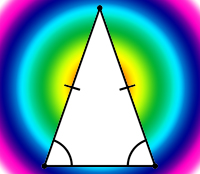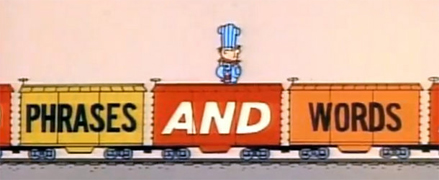Today’s ACT question of the day is a detail question from a fiction passage. We are asked why a certain character always wears a hat, so our first task is to look back at the passage and find the mention of hats. Continue reading
Category Archives: ACT
SAT/ACT Prep Timeline – When to do What
One of the things that can make preparation for the SAT or ACT feel overwhelming is the number of steps and details that have to be managed. Here is my baseline timeline that can help you get your highest score. Continue reading
ACT Question of the Day Explained – January 22, 2014 – Math, Right Triangles, Pythagorean Theorem
Today’s ACT question of the day is asking: do you know the Pythagorean theorem, and can you simplify a radical expression?
If you do and can, this is a 20-second question. If you don’t, you should the Pythagorean theorem now: a^2 + b^2 = c^2. That is, the square of the length of each side (or “leg”) of a right triangle is equal to the square of the length of the hypotenuse. This theorem makes an appearance dozens of times in various ways throughout your test, so keep it with you.
Now that we’ve got that out of the way, let’s apply it! Continue reading
ACT Question of the Day Explained – January 21, 2014 – English
Today’s ACT question of the day is an English question from a passage about Bessie Coleman. We have to determine which of the given options would best fix the underlined portion of the sentence.
In context, the underlined part of the sentence is related to a journey; it also contains a reference to the American Southwest. So, we know we are dealing with a place. What word do we use when referring to a place?
ACT Question of the Day Explained – January 20, 2014 – Science
Today’s ACT question of the day is a science question about reading charts. We have a pretty cool chart this time, though it’s a bit unconventional:

Image copyright ACT
The question wants to know what we would find at year 80. We can see that this chart is a sort of timeline, so we need to find where year 80 would fall and then see what trees would be growing. Continue reading
ACT Question of the Day Explained – January 19, 2014 – Reading, Social Sciences
 Today’s ACT question of the day comes from the same social sciences passage about the medieval court system that we read a few days ago. (Sorry that the ACT doesn’t publish a permanent link to its questions of the day like the SAT does! I’m looking for an online link to their questions, but the general principles still apply to the questions that you will see on test day – and those principles are more important than solving specific questions, since you won’t see these exact questions on your test, anyhow!)
Today’s ACT question of the day comes from the same social sciences passage about the medieval court system that we read a few days ago. (Sorry that the ACT doesn’t publish a permanent link to its questions of the day like the SAT does! I’m looking for an online link to their questions, but the general principles still apply to the questions that you will see on test day – and those principles are more important than solving specific questions, since you won’t see these exact questions on your test, anyhow!)
We have a detail question that asks about a specific term from the passage: when was this specific kind of trial used? Let’s start by finding that term in the passage.
ACT Question of the Day Explained – January 18, 2014 – Geometry, Triangles
 Today’s ACT question of the day is almost too easy to explain. We are given an isosceles triangle, drawn to scale, and the measure of the third angle (the one without a corresponding angle): 22 degrees.
Today’s ACT question of the day is almost too easy to explain. We are given an isosceles triangle, drawn to scale, and the measure of the third angle (the one without a corresponding angle): 22 degrees.
Isosceles triangles have two congruent angles and two congruent sides. There are 180 degrees inside a triangle. If you keep those two ideas in mind, you will have this problem solved before I can even finish explaining.
ACT Question of the Day Explained – January 17, 2014 – English, Conjunctions
 Today’s ACT question of the day is an English question that, at its heart, is all about coordinating and subordinating conjunctions! (Whoa.) It’s not a real brain buster, don’t worry.
Today’s ACT question of the day is an English question that, at its heart, is all about coordinating and subordinating conjunctions! (Whoa.) It’s not a real brain buster, don’t worry.
In this question, a government agency was created to license radio stations, _____ it didn’t have any power over these stations. What word did you fill in there naturally? Remember that word. Continue reading
ACT Question of the Day Explained – January 16, 2014 – Science
 Today’s ACT question of the day is a science question about a bottom-dwelling organism. (Now you have a new name to call your best friend when s/he makes you mad! Not responsible if you try that on your parents.)
Today’s ACT question of the day is a science question about a bottom-dwelling organism. (Now you have a new name to call your best friend when s/he makes you mad! Not responsible if you try that on your parents.)
We have a table that describes the concentrations of certain ions in the sediment at the bottom of an ocean. Does it matter, for the ACT, if you know what all of those symbols (Fe, O, CO, etc.) stand for? Do you need to know what pH is? Nope. Just make sure you look at the right symbols when it comes time to answer the question.
Speaking of the question, our bottom-dwelling organism is a little picky and it wants a sediment depth that provides the following conditions:
- a neutral pH (which, according to the given text, is 7)
- low Fe2+
- high concentrations of O2
Time to read the chart! Continue reading



